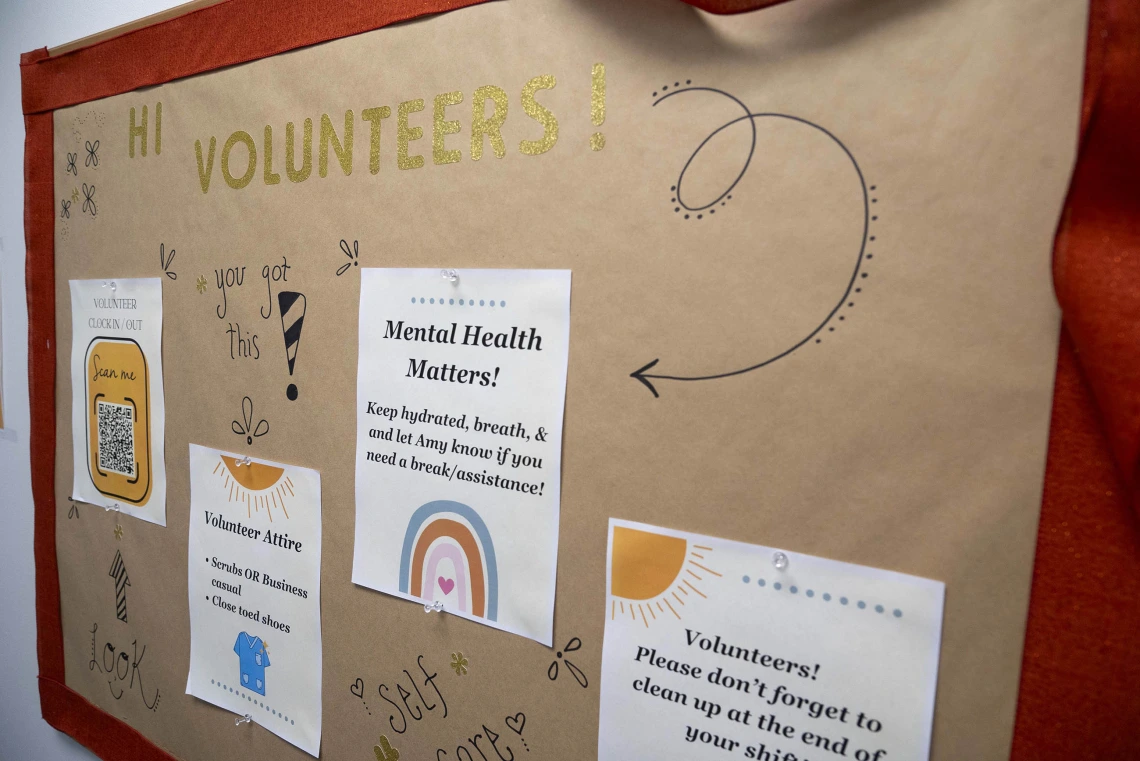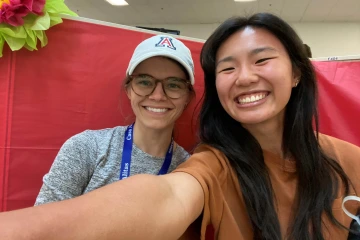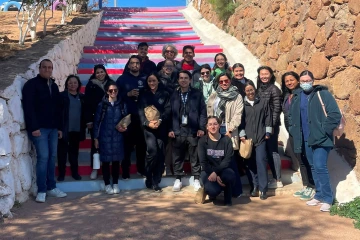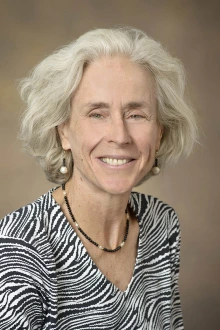Experiential learning impacts students, migrants
As part of the Health Sciences Design course MILAGRO Collaborative, faculty and students provide much-needed services to migrants in Tucson.

Volunteering at Casa Alitas in Tucson, Arizona, is required for University of Arizona Health Sciences students enrolled in HSD 431/531, “MILAGRO Collaborative: Addressing Migration in the Arizona-Mexico Borderlands.”
“Something as seemingly simple as health care often makes the difference between life and death for asylum seekers.” The epiphany, which came during a University of Arizona Health Sciences class, uncovered Lauren Melcher’s passion for working with people in rural and underserved areas.

Doctor of Nursing Practice students Lauren Melcher and Sarah Brock helped migrants at the Tucson welcome center while enrolled in MILAGRO Collaborative, a Health Sciences Design course. (Courtesy of Lauren Melcher)
“I've experienced not having health care as a kid, but it’s a completely different ballgame for people who have no resources and a lack of representation or protection in our country,” said Melcher, who was pursuing a Master of Science for Entry to the Nursing Profession through the UArizona College of Nursing when she heard about HSD 431/531, “MILAGRO Collaborative: Addressing Migration in the Arizona-Mexico Borderlands.”
The course is offered through Health Sciences Design, an academic initiative of UArizona Health Sciences. During the class, students analyze the evolving root causes of migration and the relative impact of effective public policy, exploring social determinants of health and the role of volunteers in supporting migrant communities, and developing interprofessional perspectives across health-related disciplines and practices.
The course is taught by an interprofessional group of faculty and staff from the College of Medicine – Tucson, College of Nursing, R. Ken Coit College of Pharmacy and Mel and Enid Zuckerman College of Public Health, in partnership with Casa Alitas and other community partners.
“What I think a university does is it creates the capacity to really engage with the issues of our time,” said Lisa Kiser, DNP, an assistant clinical professor in the College of Nursing and one of the faculty leaders of the course. “Starting around October 2018, those of us who had been volunteering started to coordinate meetings as part of a humanitarian response to the increase in asylum seekers. We realized the value of bringing students into this. We wanted to be able to have an innovative, rapid-response model of education.”
Getting students closer to patients

A group of student volunteers pose near la Casa de la Misericordia in Nogales after helping migrants upon arrival in the U.S. (Courtesy of Lauren Melcher)
Casa Alitas is a facility that helps migrants released by the U.S. Border Patrol and Immigration and Customs Enforcement in the Tucson area. It provides a safe, temporary place for migrants to rest, get food and water, care for their children, and make arrangements to continue their travel within the United States. Students, faculty and staff from the MILAGRO Collaborative offer skilled medical, nursing, pharmaceutical and support services as needed.
“We have our own syllabi and our own curriculum, learning objectives and modules, but the heart of the course is the 45 hours of service,” Kiser said. “We know that students are really using it to gain knowledge of an essential issue like migration.”
For Melcher, the course brought her closer to the patient-focused experience she desired rather than her previous lab-based coursework.
“I think it’s part of our job, as health care providers, to be able to understand and try to relate to people from different communities, countries and cultures, not just what many experience in this country,” Melcher said.

Lisa Kiser, DNP, and other faculty members wanted to develop an “innovative, rapid-response model of education,” and did so through the Health Sciences Design course MILAGRO Collaborative.
“Seeing the students take what they learn in the classroom and connect it to their community or a humanitarian effort is really rewarding as an instructor,” said Maia Ingram, MPH, co-director of the Arizona Prevention Research Center and instructor of a public health advocacy course in the Mel and Enid Zuckerman College of Public Health. “The students have life experience that they’re bringing to this and then are using their education to meet a health need in the world.”
Bringing together multiple disciplines
The MILAGRO course brings together upper-level undergraduate and graduate students from across UArizona Health Sciences in structured, interprofessional and community-engaged education and service opportunities focusing on immigrant health, well-being and safety. Launched in 2019, the course has educated more than 80 Health Sciences students in partnership with the Arizona Area Health Education Center program, which includes students from the Arizona State University School of Social Work, and the Zuckerman College of Public Health Rural Health Professions Program.

Maia Ingram, co-director of the Arizona Prevention Research Center, teaches a public health advocacy course in the Mel and Enid Zuckerman College of Public Health.
Students work in teams of four and might handle everything from intake to assisting migrants with clothing donations, securing bus or plane tickets to their final destination, or helping translate from their native dialect or language into English.
Danielle Chellman, who is in a dual-degree program through the Coit College of Pharmacy and College of Nursing, participated in one of the first MILAGRO classes in 2019. She says she had some experience interacting with migrants in her role at a retail pharmacy, where people would bring in medications from their home country and she would help them find equivalents.
“In pharmacy and nursing college, they teach us to build these relationships with patients, but being in the MILAGRO course gave me that first-hand experience of truly how important it is not only to treat someone physically, but to build a relationship where they can open up to you,” Chellman said. “I still continue to volunteer at Casa Alitas because I did see a big benefit of volunteering and understanding people’s culture. I want to learn more about how best to care for these patients.”
Melcher was struck by the resilience of the people she helped at Casa Alitas.
“The thing I took away most was surprise at how much art and expression were incorporated into these spaces. Guests were inclined to paint murals, make embroidery, hang them up, decorate the place and make it their home,” she said. “Everyone seemed to want to make things more beautiful and bring color and light to dark situations. Color and beauty speak to me personally, so I thought that was wonderful, and it made me admire the resilience, and I learned valuable perspective from them.”
Our Experts
Lisa Kiser, DNP
Assistant Clinical Professor, College of Nursing
Maia Ingram, MPH
Co-Director, Arizona Prevention Research Center
Health Promotion Sciences Department, Mel and Enid Zuckerman College of Public Health
Related Stories
Contact
Blair Willis
UArizona Health Sciences Office of Communications
520-419-2979, bmw23@arizona.edu

